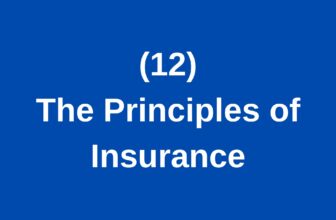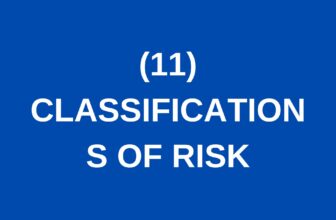6. Understanding Risk Attitudes: A Comprehensive Guide for Insurance Professionals (FREE COURSE)
Introduction to Risk Attitudes
Welcome to Chapter 5 of our course on Types of Risk Attitudes. In this chapter, we will explore what risk attitude means and how it influences behavior when risks are revealed or discovered. Understanding risk attitudes is crucial for insurance professionals as it helps in categorizing clients and effectively managing their needs.
Defining Risk Attitudes
Risk attitude refers to how individuals or businesses react when they become aware of potential risks. This reaction can be broadly categorized into two groups: risk seekers and risk averse individuals. As an insurance professional, it is essential to identify which group your clients belong to in order to provide appropriate guidance and solutions.
Risk Seekers vs. Risk Averse
Risk Seekers
Risk seekers are those who are willing to take on certain risks themselves. They acknowledge the presence of risks but choose not to mitigate, eliminate, or transfer these risks to an insurance company. This group tends to believe in their ability to manage potential risks without external assistance.
Risk Averse
On the other hand, risk averse individuals or entities prefer not to bear risks themselves. They actively seek to identify, reduce, eliminate, or transfer risks. This group is more likely to approach insurance professionals for risk transfer solutions and are generally easier to manage as clients.
The Role of Insurance Professionals
Understanding these risk attitudes is pivotal for insurance professionals. While risk averse clients readily seek your services, risk seekers may require more effort to convince of the benefits of risk mitigation and transfer. Your role involves educating risk seekers about the potential consequences of unaddressed risks and influencing their attitudes towards a more risk-averse stance.
The Importance of Emotional Literacy
The risk attitude curve is a useful tool in this context. This curve illustrates how individuals feel about and respond to uncertainty, categorized into different comfort and discomfort levels. The curve is divided into five sections:
- Risk Seeking Zone: From zero to high comfort levels.
- Risk Addicted Zone: From high comfort to extreme comfort levels.
- Risk Averse Zone: From zero to high discomfort levels.
- Risk Paranoid Zone: From high discomfort to extreme discomfort levels.
- Risk Tolerant Zone: The middle section where individuals tolerate risks without significant comfort or discomfort.
Influencing Risk Attitudes
As an insurance professional, your goal is to move clients from the risk-seeking or risk-addicted zones towards the risk-averse zone. This requires a deep understanding of the technical aspects of risk management, including risk identification, control, and reduction strategies.
Conclusion
In conclusion, recognizing and understanding different risk attitudes is essential for providing effective insurance solutions. By educating and influencing clients, particularly those in the risk-seeking category, you can help them make informed decisions about risk management. This knowledge not only aids in client satisfaction but also enhances your professional expertise.
If you have any questions or need further clarification, please feel free to contact me. I am happy to assist you.
Thank you for your attention.
Bye.





